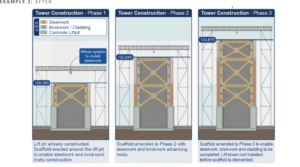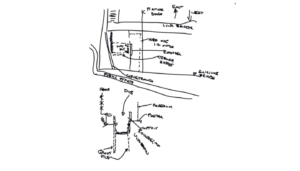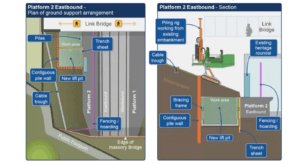In week 9 of Spring term, we were joined by Reading graduate and user-centred information designer Oliver Tomlinson, for Baseline shift. Oliver is the CEO and founder of TDL creative, striving to improve how users interact with their environments and objects in daily life.
Creation of TDL
For a while in his early career, Oliver felt like a fraud. Although graduating in product design, he had no experience in graphic design. However, he did know he was communicating information and so chose to promote himself that way – as an information designer, working specifically in bids. Bids are potential solutions to services required and are often worth billions. For example, National Highways manages roads but does not actually do the work required to maintain them, such as fixing potholes or repairing bridges. This work goes to private companies such as Kier Highways (who currently manage Readings roads). Kier have to ‘bid’ for this work – proving their expertise in a compelling fashion. Oliver and his team as TDL help companies create these bids, for clientele ranging from the construction industry to the defence sector.
Oliver went on to study a MA at Reading. He’d never experimented with any conventional design, and would happily use Times Roman and Arial as default typefaces. He felt inferior. What he did know was how to plan and structure his time, treating his year in the studio as a 9–5 job where found a like-minded community focusing on process more than making things look pretty. Meanwhile, Oliver started receiving enquiries on his website from large companies to work on bids for new sectors. His diagrams impressed his clients, and his freelancing career took off soon after, taking him to London for more opportunities. Work didn’t stop coming in, and so TDL was born, where Oliver hired additional staff to help to assist him on the design side. The team would eventually move to a studio space and continue to help clients by designing bid documents.
‘Don’t forget to enjoy what you do and what you do it for. Theres so much opportunity out there for fantastic design’–Oliver Tomlinson
What we design?
To make information as understandable as possible, Oliver emphasises the importance of collaboration with clients and to always be responsive and reliable in demanding solutions. A number of challenges arrive when authors are not talking directly to the designers. Questions must be asked for a fuller understanding of the job and most of the time this is appreciated by the client and the outcome will be more effective. Oliver himself says that within the interview process for employees it is unlikely that potential hires will receive a job if they don’t ask any questions at this stage. Not fully collaborating can mean the designer does not necessarily understand the brief and may make something the client does not want, which can result in an expensive and time–consuming job and unhappy authors. Customers want reassurance that they have hired the right company for the job, they don’t want to read lots of information but want to look more professional than their competitors, and the designer has to get this right. Diagrams need a clear path for the user to follow. Sometimes the simplest way to create this is to ‘chunk’ information together, reworking the flow of the original proposal – the content doesn’t necessarily have to be altered in anyway. The most important thing to understand the context and clients, such as their stresses and needs. Effective collaboration is the best way to accomplish this.
‘Essentially we design diagrams for document readers who don’t want to read and for authors who don’t want to write, but form something that can affect the way our whole country works’.–Oliver Tomlinson



What Oliver and his team at TDL achieve is no easy feat. They not only have to translate information from companies in specific fields to make it accessible, they also have to understand it themselves. They are designers, not experts in construction and engineering and sometimes that means having to learn new things in order to progress, vastly broadening their knowledge of all kinds of different business fields in many countries.
Oliver has helped open student eyes with his talk here, but it is up to us to shape our own paths, from feeling uncomfortable in a new field of business, to being a CEO and founder of your own design agency.

